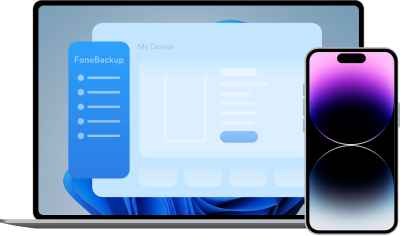Fixes to iPhone iPad Charging Issues After iOS 18 Update
iPhone not charging after update? iPhone charging slow after update? This guide will explain why you meet such iPhone charging problems and also offer the solutions.
Why iPhone Not Charging or Charging Slow?
Recently, lots of users reported that their iPhone not charging or charging slowly after iOS 18 update. There are two main reasons for this issue.
-
Hardware problems. The charger, charging port, or charging cable may be damaged and it prevents a solid connection between the power and your device.
-
Issues with software. The corrupt charging system on the device or some bugs that come with the new update will also cause the iPhone charging problems.
►Note: If you find that your device stops charging at 80 percent, that’s because of the “Optimized Battery Charging” - a feature since iOS 13 that will slow the rate of battery aging by reducing the time that your iPhone spends fully charged.
How to Fix iPhone Charging Issues After iOS 18 Update
The following are some workarounds that can be used to fix iPhone charging issues. Apply to all iPhone and iPad models, including iPhone 6s/6s Plus, iPhone 7/7 Plus, iPhone 8/8 Plus, iPhone X/XR/XS (Max), iPhone 11/11 Pro (Max), iPhone SE (2020), iPhone 12/13 (mini) / Pro (Max), iPhone 14/15 (Plus) / Pro (Max), iPad Pro/Air.
Tip 1. Check the Lightning Cable and USB Adapter
It’s recommended to use the Apple-matched chargers and cables. The low-quality charger/cable should be blamed for iPhone charging problems. If you are using a third-party cable/adapter, please ensure that it has the MFi certification. Otherwise, it may do harm to your device.
On the other hand, Apple’s lightning cables are prone to fraying and most of us have experienced a broken charging cable. So go to have a check whether they are damaged, like breakage, exposed wire, or any bends. You can try other lightning cable and USB adapter to see if it’s the problem with your charger.
Tip 2. Clean the Lightning Port
We put our iPhone into pockets, bags, and other places that filled with dust and lint every day. The dirt or lint can accumulate in the Lightning port over time and it will interfere with the connection between the cable and your iPhone.
Turn off your iPhone and look carefully to see whether there is dirt, dust, lint, and other grime. If you see anything, you can remove it gently with a dry soft toothbrush. Or if you free nervous about doing this, you can go to the Apple Store to ask for help.
Tip 3. Try Another Power Source
There are various ways to charge the iPhone. Just try a different way. If you used to charge your iPhone wirelessly, you can charge it using a wall adapter, your computer or other power sources. A ruptured power source could also be the reason that your iPhone not charging or charging slow.
Tip 4. Force Restart Your Device
The force restart can help fix many minor glitches on the device. The iPhone not charging after update issue may go away after a force restart.
● Force restart iPhone 8 and later & iPad with Face ID:
Quickly press and release the Volume Up button > Quickly press and release the Volume Down button > Press and hold the Side button until you see the Apple logo.
● Force restart iPhone 7/7 Plus:
Press and hold the Power button and Volume Down button together > Release both buttons when the Apple logo appears.
● Force restart iPhone 6s, SE and earlier & iPad with Home button:
Hold down the Home button and the Power button at the same time > Release both buttons when the Apple logo appears.
Tip 5. Restore Your Device
If the above methods cannot help you the fix iPhone not charging after iOS 18 update, the last option is to restore your device to factory settings. Please be aware that the reset will erase all content and settings on your device, so back up important data in advance to avoid data loss.
When it comes to backing up iPhone data, iTunes and iCloud may appear in your mind. However, you have no choice but to back up the whole iPhone data and selective recovery is not supported either. If you prefer an easier backup way, another third-party backup tool named AOMEI FoneBackup can be a better choice.
● It helps you backup most import data like contacts, messages, photos, songs, etc.
● It allows you to preview and select the data you really need before the backup and restore.
● It will not erase any existing data on the device during the restoration.
Get the tool and take a few minutes to ensure data safety before the reset.
→ Restore iPhone Directly
Go to Settings > Tap General > Tap Reset > Tap Erase All Content and Settings > Enter your passcode to confirm.
→ Restore iPhone via iTunes
1. Download and install the latest version of iTunes on computer.
2. Run iTunes and plug in your iPhone.
3. Click the Device icon > Go to Summary page > Click Restore iPhone...
When the process is done, you can choose to restore from an iTunes or iCloud backup. If you have backed up your iPhone with AOMEI FoneBackup, you can set your iPhone as a new device and then restore needed files back to your device.
Conclusion
That's all about how to fix iPhone charging slowly after update issue. Before going to an Apple Store to repair your iPhone, you can try to troubleshoot the issue by yourself. If you have any new idea about this “iPhone not charging after iOS 18 update”, you can also share it with us.

